Mother’s Day is right around the corner, and if you want to pick up a new piece of tech for mom, you can do so for less before the holiday. A number of Apple devices are on sale, including the latest iPad Air and the AirPods Pro, while a bunch of earbuds have been discounted, too, like the newest models from Beats and Jabra. The Fitbit Charge 5 remains on sale for $130, while a few of iRobot’s latest robot vacuums are hundreds of dollars off. Here are the best tech deals from this week that you can still get today.
AirPods Pro
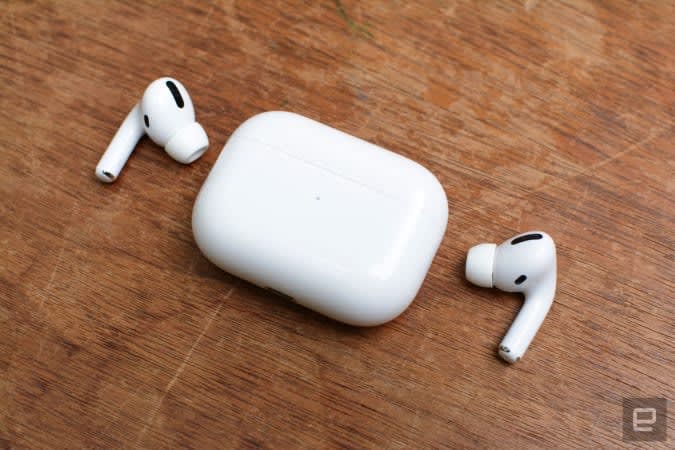
Apple’s AirPods Pro are back on sale for $175, which is 30 percent off their normal price. We gave them a score of 87 for their improved fit, good audio quality and solid ANC.
Buy AirPods Pro at Amazon – $175
16-inch MacBook Pro
Apple’s latest 16-inch MacBook Pro is $250 off and down to $2,249. While that’s still a hefty price tag, it’s the lowest we’ve seen since the laptop came out last year. We gave the notebook a score of 92 for its super fast performance, stunning Liquid Retina XDR display, fantastic keyboard and array of ports.
Buy 16-inch MacBook Pro at Amazon – $2,249
Apple Watch Series 7
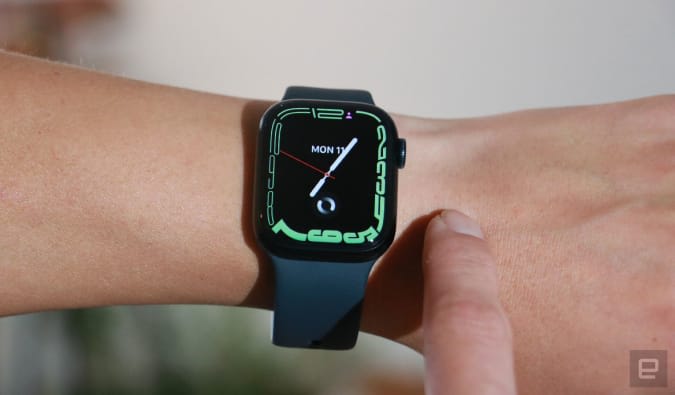
Many color options of the 41mm Apple Watch Series 7 are down to $330, or $70 off their normal price. We gave the wearable a score of 90 for its bigger screen, faster charging and handy watchOS 8 features.
Buy Apple Watch Series 7 at Amazon – $330
iPad Air
The latest iPad Air is $40 off and down to $559. We gave it a score of 90 for its much improved performance thanks to the M1 chip, Center Stage-capable cameras, good battery life and solid build quality.
Samsung Galaxy S22 Ultra
The entire Galaxy S22 lineup is on sale right now, with the Galaxy S22 Ultra and the S22+ both seeing $200 discounts. The standard S22 is $100 off and down to $700 as well. If you want the best that Samsung has to offer right now, we recommend going for the S22 Ultra, which earned a score of 89 from us for its bright, colorful display, built-in S Pen and solid cameras.
Buy Galaxy S22 Ultra at Amazon – $1,000Buy Galaxy S22+ at Amazon – $800Buy Galaxy S22 at Amazon – $700
Samsung Galaxy Watch 4
Both the 40mm and the 44mm Galaxy Watch 4 models are $50 off and down to $200 and $230, respectively. While not record lows, these sale prices are some of the best we’ve seen since last Black Friday. We gave the Galaxy Watch 4 a score of 85 for its bright, crisp display, comprehensive head tracking and improved third-party app support.
Buy Galaxy Watch 4 (40mm) at Amazon – $200Buy Galaxy Watch 4 (44mm) at Amazon – $230
Beats Fit Pro
The new Beats Fit Pro earbuds are $20 off and down to $180. That’s one of the best prices we’ve seen all year, and they earned a score of 87 from us for their comfortable fit, punchy bass, solid ANC and loads of handy features.
Buy Beats Fit Pro at Amazon – $180
Beats Studio Buds
The Beats Studio Buds are back down to a record low of $100. We gave them a score of 84 for their tiny, comfortable design, balanced sound and quick-pairing on both Android and iOS.
Buy Beats Studio Buds at Amazon – $100
Solo Stove
Solo Stove’s spring sale knocks hundreds off its fire pits, so you can grab one for as low as $200. The Ranger, which is the smallest model, comes in at that price, while the mid-sized Bonfire is $160 off and down to $240 and the big Yukon is a whopping $325 off and down to $425. We’ve recommended these gadgets in may outdoor guides because they’re fairly portable and create fires that won’t smoke you out.
Echo Dot
Amazon’s Echo Dot is still on sale for $28, and you can get the tiny smart speaker bundled with a smart plug for only $5 more. We gave the Echo Dot a score of 88 for its attractive design, decent audio quality and tap-to-snooze alarm feature.
Echo Show 5
The second-gen Echo Show 5 is down to $45 right now, which is half off its normal price. We gave it a score of 85 for its great sound quality, compact size and tap-to-snooze feature. And if you want to up your smart home game, you can get a two-pack of the Blink Mini indoor security camera for only $35. They’ll work with the Echo Show 5, allowing you to see camera feeds from the smart clock’s display.
Buy Echo Show 5 at Amazon – $45Buy Blink Mini (2 pack) at Amazon – $35
Nintendo $50 eShop gift card
You can still save $5 when you buy a Nintendo $50 eShop gift card from Amazon, so you’ll get the full $50 for only $45. You can then use those funds to get new titles like Kirby and the Forgotten Land, or stock up on a bunch of more affordable games.
Buy Nintendo $50 eShop gift card at Amazon – $45
Jabra Elite 4 Active
Jabra’s new Elite 4 Active earbuds are $20 off and down to $100, which is a new record low. The budget-friendly Elite 3 are also on sale and down to only $60. We gave the Elite 4 Active a score of 84 for their comfort fit, solid sound quality and customizable ANC, while the Elite 3 came in at 88 thanks to their good battery life, reliable onboard controls and comfortable fit.
Buy Elite 4 Active at Amazon – $100Buy Elite 3 at Amazon – $60
Roomba 694
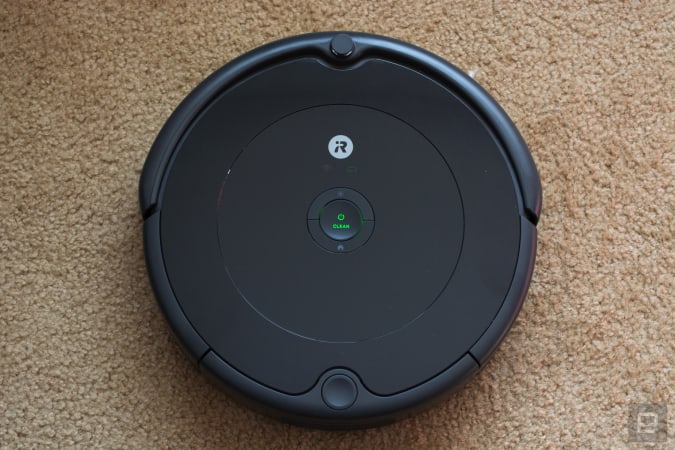
iRobot’s affordable Roomba 694 is still on sale for $180 right now, which is a record low. This is one of our favorite budget-friendly robot vacuums thanks to its easy to use mobile app, good cleaning power and sleek design.
Buy Roomba 694 at Amazon – $180
Roomba j7+
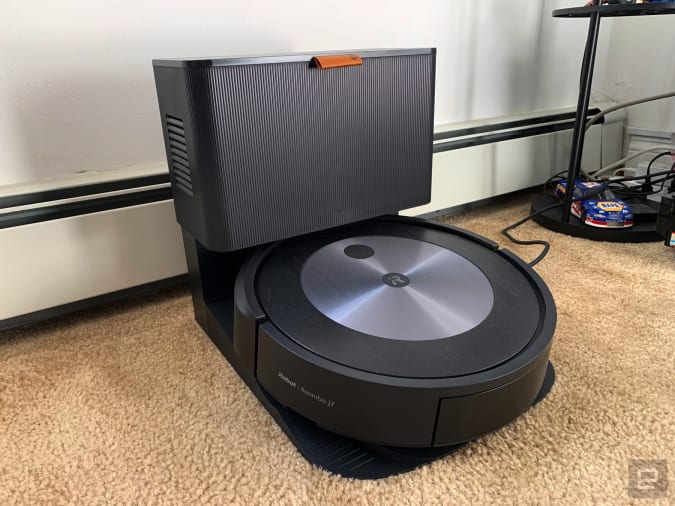
The Roomba j7+ robo-vac and the Roomba s9+ are both $200 off right now and down to $599 and $799, respectively. These are both advanced machines from iRobot, with the j7+ sporting a pet poop detection feature, while the s9+ has the strongest suction power of all of the company’s robot vacuums. Both also come with clean bases, so you won’t have to empty their dustbins manually after each cleaning job.
Buy Roomba j7+ at Amazon – $599Buy Roomba s9+ at Amazon – $799
Fitbit Charge 5
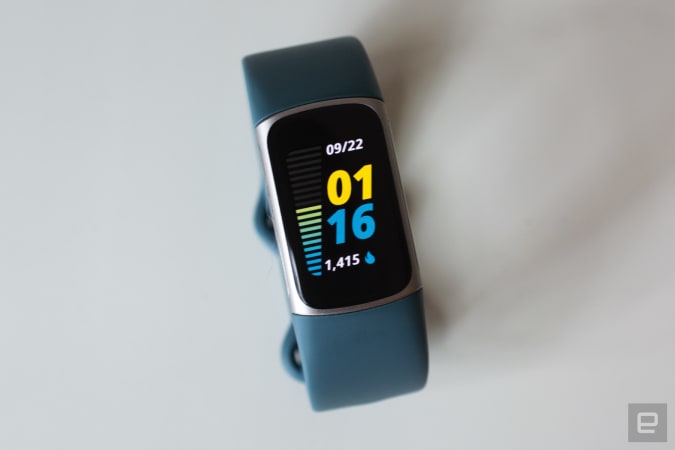
The Fitbit Charge 5 tracker is down to $130, which is only $10 more than its record-low price. We gave the device a score of 82 for its accurate onboard GPS, slim design, standard Fitbit Pay and long battery life.
Buy Fitbit Charge 5 at Amazon – $130
Ninja Foodi 10-in-1 multicooker
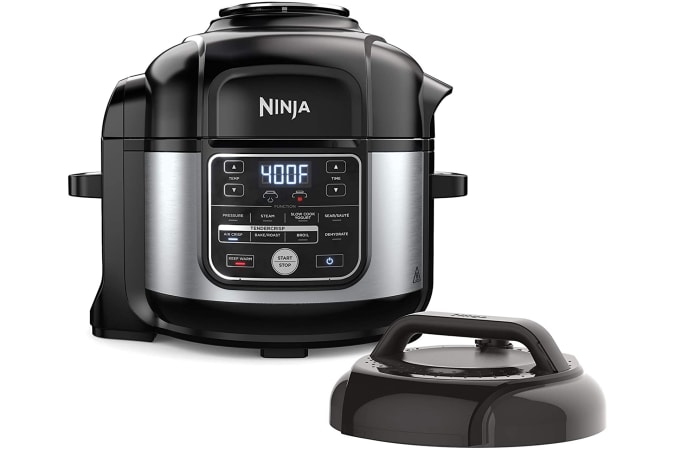
Ninja’s 10-in-1 multicooker is $70 off and down to $130, which is close to its all-time-low price. This is a solid alternative to an Instant Pot as it has a bunch of cooking modes including pressure cook, slow cook, steam, yogurt and even air fry.
Buy Ninja 10-in-1 multicooker at Amazon – $130
Google Nest thermostats
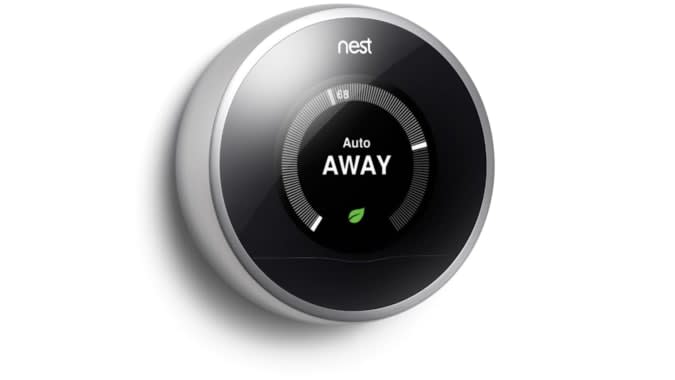
Both Google’s standard Nest Thermostat and the more advanced Learning model remain discounted right now. You can pick up the regular version for $100, while the Learning Thermostat is still on sale for $200. They share most of the same features, but you’ll get a slicker design, a higher-res display and the ability to connect with Nest Temperature Sensors with the Learning model.
Buy Nest Thermostat at Amazon – $100Buy Nest Learning Thermostat at Amazon – $200
Google Nest Video Doorbell Battery
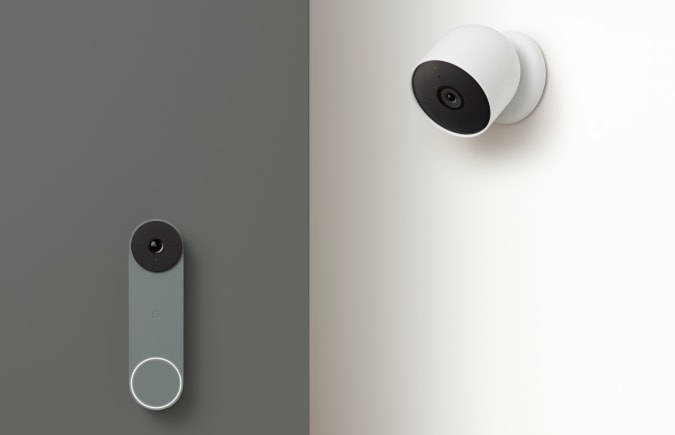
A handful of Google smart home devices are on sale right now, including the Nest Video Doorbell Battery, which is $30 off and down to $150. This gadget will let you keep an eye on what’s going on outside your door from your phone, and there are no wires to fuss with when you install it. You can also pick up the Nest Cam Indoor and Outdoor for less, coming in at $80 and $150, respectively.
Buy Nest Cam Indoor at Adorama – $80Buy Nest Cam Outdoor at Adorama – $150Buy Nest Cam Outdoor at B&H – $150Buy Nest Video Doorbell Battery at Adorama – $150Buy Nest Video Doorbell Battery at B&H – $150
New tech deals
JBL Xtreme 3
This midrange Bluetooth speaker is $80 off and down to $300, which is the cheapest we’ve seen it. It earned a spot in our portable Bluetooth speaker guide for its dynamic yet balanced sound quality, IP67-rated design and relatively compact size.
Buy JBL Xtreme 3 at Amazon – $300
Withings ScanWatch
Withings’ ScanWatch is $50 off and down to $230 right now. It’s a hybrid timepiece, so if you like the look of analog watches, this might be the wearable for you. In addition to all-day activity and sleep tracking, the ScanWatch also takes electrocardigrams and tracks heart rate, oxygen saturation, respiratory wellness and more.
Buy Withings ScanWatch at Amazon – $230
ThermoWorks ThermoPop
For a limited time, you can pick up the ThermoPop instant-read thermometer for $14 less than usual, bringing it down to $21. This is the smaller sibling to the Thermapen One and we like its splash-proof design, backlit display and cute design.
Buy ThermoPop at ThermoWorks – $21
8Bitdo Arcade Stick
The Arcade Stick from 8BitDo is on sale for a limited time only for just under $76. That’s 16 percent off its normal price and the cheapest we’ve seen it. We liked its distinct, retro design, its solid joysticks and primary buttons and its compatibility with Nintendo Switch, PC and Raspberry Pi.
Buy 8BitDo Arcade Stick at Amazon – $76
Follow @EngadgetDeals on Twitter for the latest tech deals and buying advice.
